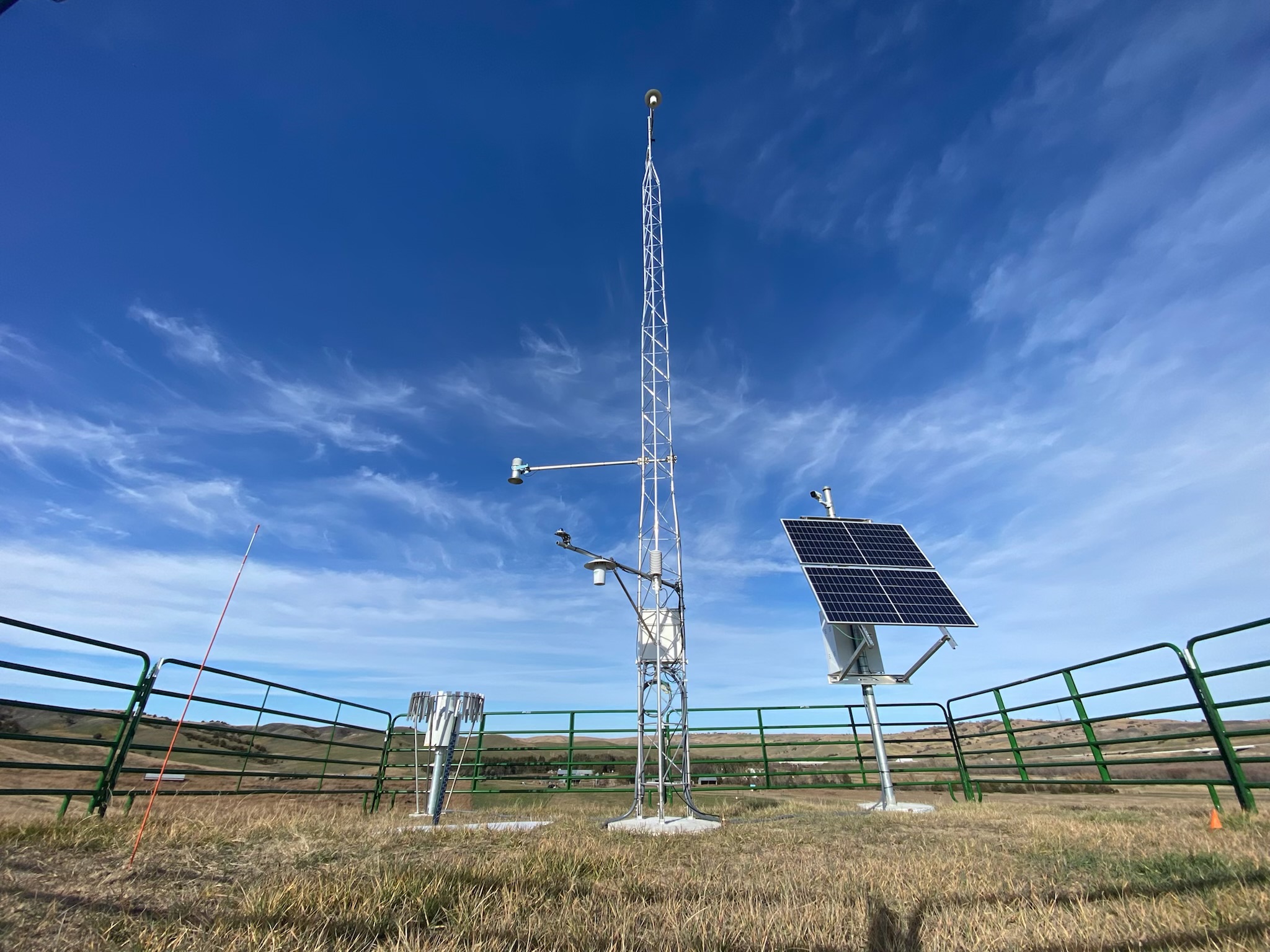About the Mesonet
A mesonet - short for mesoscale network - is a collection of professional weather stations with closer spacing and more
frequent reporting that characterizes fine scale, dynamic weather. South Dakota State University's Mesonet is
used by the general public, agriculture, public safety, the National Weather Service and researchers.
The Mesonet is in the midst of a $12.8M, multi-year project funded by the Army Corps of Engineers and the NOAA Mesonet Program to upgrade, install
and deliver data from mesonet stations to improve operational monitoring of flood and drought conditions.
150+ stations - more than any exisiting state mesonet
Nearly every South Dakotan within 20 miles of a station
One million data points daily
The newest generation Mesonet station is centered around a 33-foot tall tower that sits on an acre of land. Over 150 new or upgraded stations
will be installed statewide putting nearly every South Dakotan within 20 miles of a station. They are solar-powered and cellular-connected,
and are maintained and calibrated by professional technicians. The data available to the public via our website is streamed to the National Weather Service, the Corps of Engineers,
and others for user in making operational products; and is archived for research use. Mesonet data is updated every five minutes.
The Mesonet is seeking public and private landowners to host new stations.
Each location reports a variety of data every five minutes:
Temperature and humidity
Wind direction, speed, and gust
Solar radiation
Year-round precipitation
Snow depth
Barometic pressure
Soil Moisture @ 2,4,8,20,40 inches
Soil temperature including frost depth
Temperature inversion
Images from weather cams

About Mesonet in Lakota
The Mesonet’s most important weather reports are available in the Lakota language of Oceti Šakowiŋ, the official indigenous language of South Dakota. Lakota words are specially marked.
Click for audio (Lakota and English translation).
Hover for text (English translation).
Links at the bottom of the page (English | Lakȟótiyapi) toggle languages.
This project was made possible by a grant from South Dakota State University Wokini Initiative.
PI:
Dr. Ruben Behnke
Voice:
(Elyssa) Sierra Concha
Translation:
Peter Hill
English | Lakȟótiyapi
© 2025 South Dakota Board of Regents
